Tombstone High School class of 1970

This is the Tombstone High School class of 1970.
The year of 1970 was marked as the Beatles disbanded, the year the Concord made it's first its first supersonic flight, and the year the voting age was lowered to 18.
Tombstone High School class history - 1940

These pages from the 1940 Tombstone High School yearbook give the class history.
Tombstone High School football - 1940
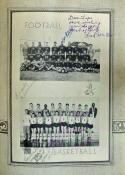
These pages from the 1940 Tombstone High School yearbook list the members of the football team, show a picture of the team, tell about the team's performance, and list game scores for the year. The team only won one game this year.
Tombstone High School basketball - 1940

These pages from the 1940 Tombstone High School yearbook list the members of the basketball team, tell about the team's performance, and lists game scores for the year.
Tombstone High School track and baseball - 1940
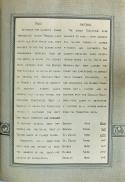
This page from the 1940 Tombstone High School yearbook tells about the track and baseball teams that year.
Tombstone High School Wasp staff - 1940

These pages from the 1940 Tombstone High School yearbook shows the Wasp staff members. The Wasp was the school newspaper.
Tombstone High School student wills - 1940

This page from the 1940 Tombstone High School yearbook shows the often comic last will and testaments of the senior class that year.
Tombstone high school Spanish and Lettermen's clubs - 1940

This page from the 1940 Tombstone High School yearbook shows the Los Conquistadores Spanish club and the Lettermen's club. The Lettermen's club included outstanding male athletes.
Tombstone High School glee club - 1940

These pages from the 1940 Tombstone High School yearbook shows the glee club members.
Tombstone High School football and basketball - 1940
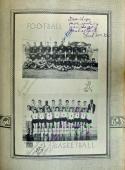
This page from the 1940 Tombstone High School yearbook shows the football and basketball teams for that year.
Tombstone High School faculty - 1940
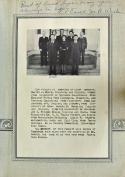
This page from the 1940 Tombstone High School yearbook shows the faculty of the school that year.
Tombstone school board - 1940

This page from the 1940 Tombstone High School yearbook shows the school board for that year. Included are Mr. J.H. Macia, Mrs. J.P. Giacoma, Mr. I. Boyette, Mr. R.N. Fourr, and Mr. A.W. Jarrett.
High school band - 1940

This page from the 1940 Tombstone High School yearbook shows the band and lists its members that year.
High school art and pipers clubs - 1940

This page from the 1940 Tombstone High School yearbook tells about the art and pipers club. The Pipers Club was a social group for girls originally organized by Miss Pipes.
Tombstone senior candids - 1939
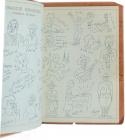
This page from the 1939 Tombstone High School yearbook shows the senior candid drawings of the senior class that year.
Included in this class were Elaine Costello (Sulger), who would become the first Huachuca City postmistress; her sister Evelyn Costello; and David Sulger, who would be the first mayor of Huachuca City.
Tombstone school board - 1939

This page from the 1939 Tombstone High School yearbook shows the school board for the district that year. Included are Mr. J.H. Macia, Mr. I. Boyette, Mr. R.N. Fourr, Mrs. J.P. Giacoma, and Mr. A.W. Jarrett.
Note in yearbook from David Sulger to coach - 1939
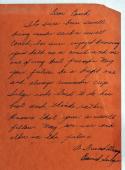
This note was written in a 1939 Tombstone High School yearbook by David Sulger to his coach Joe Wisdom. Sulger, who would go on to be the first mayor of Huachuca City, played football for the school.
Tombstone High School faculty - 1939

This page from the 1939 Tombstone High School yearbook shows the faculty of the school that year.
Tombstone High School yearbook page with the Sulgers - 1939
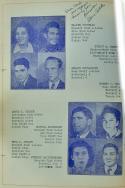
This page from the 1939 Tombstone High School yearbook shows some of the senior class that year. Included in this class were Elaine Costello (Sulger), who would become the first Huachuca City postmistress, and David Sulger, who would be the first mayor of Huachuca City.
Tombstone High School yearbook page with Evelyn Costello - 1939
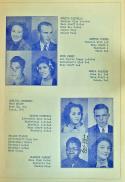
This page from the 1939 Tombstone High School yearbook shows some of the senior class that year. Included in this class was Evelyn Costello, sister of Elaine Costello (Sulger), who would become the first Huachuca City postmistress.